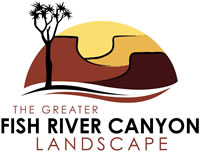Naute Recreation Resort (incl. Ghoggab)
- State reserve
- Tourism
- 361 km2
The State-owned Naute Recreation Resort (including the newly-purchased farm Ghoggab) is utlised for conservation and tourism.
The resort adjoins the Naute Dam, some 50 km south-west of Keetmanshoop. The dam was built on the Löwen River and has been in operation since 1972 while the park was proclaimed in 1988. The area around the dam is open to the public for recreational purposes (angling, boating, camping), but the majority of the game park adjoining the recreation areas to the east and south is not accessible to the public. Here populations of gemsbok, springbok and smaller antelope such as steenbok and duiker roam the grassy plains.
Literature for Naute Recreation Resort (incl. Ghoggab)
» See our Literature and other resources section for more general information
-
Plant species of the Naute Game Park
Burke, A. 2014. Plant species of the Naute Game Park – an annotated inventory. Dinteria 34: 3-11
This paper presents an inventory of plants of the Naute Game Park, based on field surveys and information from databases. The park extends over two quarter degree squares and 159 terrestrial plant species have to date been recorded. Deciduous dwarf shrubs comprise the majority of the flora. The rare, small tree Elephantorrhiza rangei and populations of quiver tree (Aloe dichotoma), Nama corkwood (Commiphora namaensis), Nama resin-tree (Ozoroa namaensis) and black-winged twin-leaf (Zygophyllum cretaceum) are of conservation importance on the inselbergs. Also of conservation importance are the Namibian endemics Euphorbia lignosa, Geigeria brachycephala, Indigofera pechuelii, Phyllanthus dinteri, Salsola arborea and kinkelbos (Tetragonia schenkii) as well as unidentified dwarf stem-succulent Apocynaceae (Stapeliod) and Hoodia species. Invasive alien mesquite (Prosopis) trees may locally pose a threat to indigenous plants. More stringent track control in the recreational part of the park would limit the disturbance of natural habitat.» Download



